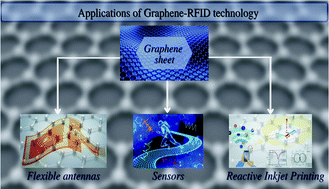Graphene, an epoch-making material in RFID technology: a detailed overview
Abstract
Many researchers claim that graphene, a specially studied carbon allotrope, has a single layer of atoms organized in a two-dimensional honeycomb lattice. Because of its exceptional electronic and mechanical properties, it has a significant job to perform in redefining future technologies. Although graphene has made a major breakthrough to be considered for a wide area of applications, most of the interesting properties of graphene are still at the early stage of research. Graphene dependent attenuators and single and multi-frequency constructible antennas are designed employing the tunability of graphene. As the name indicates, the form of RF technology that uses electromagnetic fields for automatic identification purposes of tags attached to objects is termed as radio frequency identification (RFID). For years, the use of pricy raw materials and intricate fabrication processes in metal coating and metal based conductive inks in printed electronics kept the involved cost very high. So, it is inevitable to replace the existing fabrication process with cheaper materials and simpler techniques. Researchers assert that printed graphene has the potential to be a competent alternative for RFID applications.

- This article is part of the themed collection: 2021 Focus and Perspective articles


 Please wait while we load your content...
Please wait while we load your content...